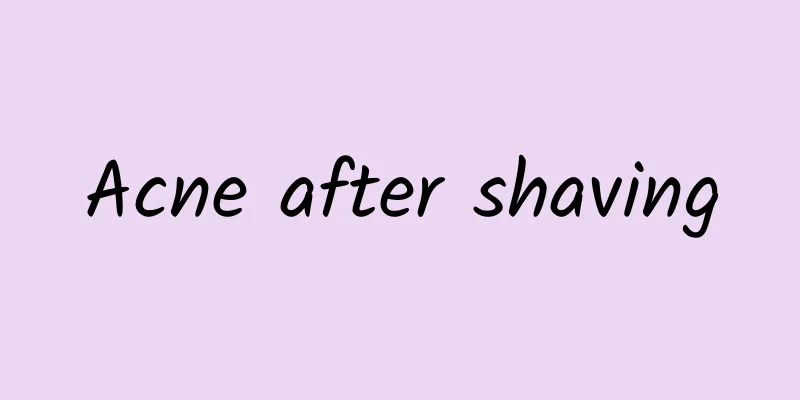Acne after shaving

|
Some people will find acne on the surface of the skin after shaving, especially those who enter puberty will be more prone to acne. After it happens, you should adjust your mood. Only by keeping a happy mood can the acne disappear faster. Also, never squeeze your acne with your hands, as it will cause some bacterial infection. The occurrence of acne is closely related to factors such as excessive sebum secretion, blockage of the ducts of the hair follicles and sebaceous glands, bacterial infection and inflammatory reactions. After entering puberty, the level of androgens in the human body, especially testosterone, rises rapidly, promoting the development of sebaceous glands and producing a large amount of sebum. At the same time, abnormal keratinization of the ducts of the hair follicles and sebaceous glands causes blockage of the ducts, obstruction of sebum discharge, and the formation of keratin plugs, i.e., micro-acne. Various microorganisms, especially Propionibacterium acnes, multiply in the hair follicles. The lipase produced by Propionibacterium acnes decomposes sebum to produce free fatty acids, while promoting inflammatory cells and mediators, ultimately inducing and aggravating inflammatory reactions. Skin lesions often occur on the face and upper chest and back. Non-inflammatory skin lesions of acne manifest as open and closed comedones. The typical skin lesions of closed comedones (also known as whiteheads) are skin-colored papules about 1 mm in size, without obvious hair follicle openings. Open comedones (also known as blackheads) appear as dome-shaped papules with significantly enlarged hair follicle openings. Acne will further develop into various inflammatory skin lesions, manifested as inflammatory papules, pustules, nodules and cysts. Inflammatory papules are red, with diameters ranging from 1 to 5 mm; pustules are of uniform size and filled with white pus; nodules are larger than 5 mm in diameter and are hard and painful to touch. The cysts are located deeper and filled with a mixture of pus and blood. These lesions can also fuse to form large inflammatory plaques and sinuses. After the inflammatory lesions subside, pigmentation, persistent erythema, and depressed or hypertrophic scars are often left behind. Clinically, acne is divided into 3 degrees and 4 levels according to the nature and severity of acne lesions: Grade 1 (mild): only acne; Grade 2 (moderate): in addition to acne, there are also some inflammatory papules; Grade 3 (moderate): in addition to acne, there are also more inflammatory papules or pustules; Grade 4 (severe): in addition to acne, inflammatory papules and pustules, there are also nodules, cysts or scars. |
<<: Single men meet their physiological needs
>>: What are the white particles on the testicles?
Recommend
What is the reason for men's memory loss?
There are often some male friends who are in thei...
Why do boys have less hair on the back of their heads?
Everyone grows hair. Some people have thin hair, ...
Pictures after penile pearl insertion
Penile pearl insertion is a very popular surgical...
Causes of male sexual dysfunction
Decreased male sexual function is particularly da...
What are the normal values for prostatitis examination?
Nowadays, many men suffer from prostatitis due to...
What is the disease of testicular peeling, itching and cracking?
The scrotum is a male reproductive organ that is ...
Is exercise useful for men's premature ejaculation?
There are many men with premature ejaculation in ...
What foods are good for male genitals?
Every man hopes that his genitals can become stro...
How to reduce a man's general belly
As the saying goes, being able to eat is a blessi...
What are the dangers of excessive obesity in men?
People who are overweight often have abnormal sug...
Is cupping good for men?
Cupping is a traditional Chinese medicine therapy...
Can poor sperm lead to miscarriage?
Some men may have poor sperm count due to reprodu...
How long does it take to treat impotence?
Impotence is a common disease among men. Today, m...
What should men eat to nourish their bodies when they stay up late?
Nowadays, the pressure of life is getting greater...
What causes bleeding in men's stools?
If there is any abnormality in bowel movements, a...









